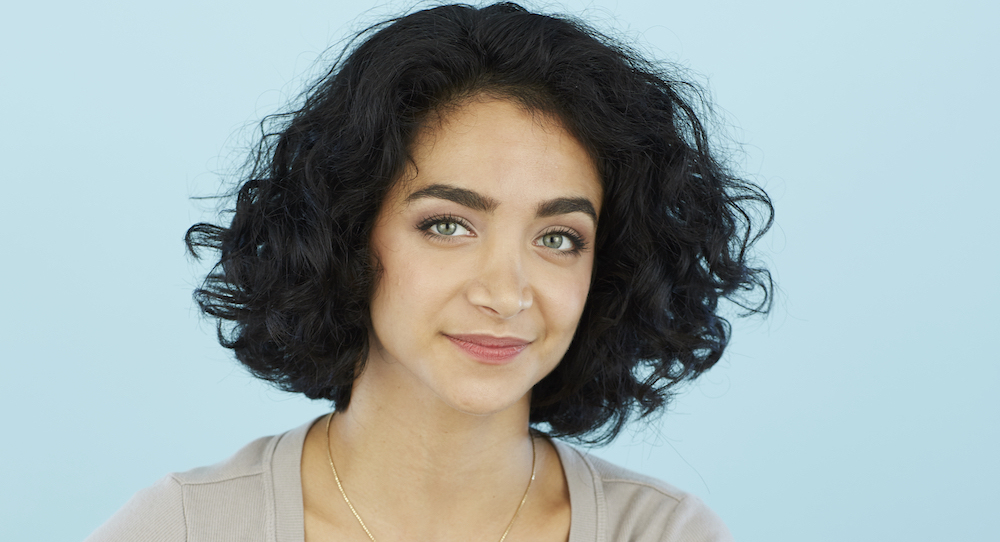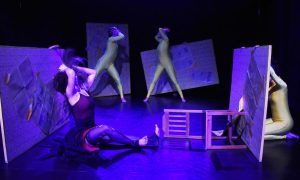Dance training sets in place a wide range of values – discipline, attention to detail, teamwork and greater connection with one’s body. Flexibility, strength and coordination develop, along with an ability to tell a story through self-expression. These skills translate across many fields, and serve many dancers in careers outside of the performing arts or dance education. Sometimes, however, dance training transfers into the work of another physical performing art. For Nobahar Dadui, that’s ice skating. She’s now starring in Cirque du Soleil’s Crystal: A breakthrough ice experience, currently on tour. Here, Dadui shares her experiences with Dance Informa.
What’s it like touring with Cirque du Soleil?
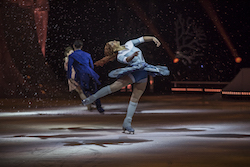
Nobahar Dadui in Cirque du Soleil’s ‘Crystal: A breakthrough ice experience’. Photo by Matt Beard, courtesy of Cirque du Soleil 2018.
“This is one of the best touring experiences I’ve had since I’ve started working professionally. We are very well taken care of, with a team of people to take care of us. Cirque du Soleil covers everything from transportation to food to physio to anything else we may need, not only as a performer but as a touring person with human needs. We do have harder days, but it’s the group that makes this experience unique and easier in more challenging moments.”
How did you come to dance and ice skating?
“My mother met my father while she was a dancer in Iran, so it’s absolutely in my blood to perform. At that time, it became impossible for her to continue to pursue dancing because of the political and social climate in Iran. My father always had big dreams for me and my family, and before my birth, he envisioned me being a figure skater, a dancer and an actor. He also knew that I would be named Nobahar. I started dancing at the age of three years old, and my family moved to Canada when I was five years old; that’s when I started figure skating and gymnastics.
I continued training as a dancer (ballet, jazz, hip hop) as a base for my two main sports. It took all my time from Monday through Sunday. My father had an Olympic dream for me! Although the Olympics wasn’t my destiny, I competed in gymnastics until the age of 16, and in figure skating until I was 18 years old. At the age of 19, I decided to go to university and study business. My father didn’t agree with my choice and insisted that I pursue something I would love. This is when I joined the dance program at George Brown University, which included theater and psychology.
I became a professional figure skater at the age of 19 years old, and I was selected to be in the opening cast of Energia, presented by Holiday on Ice in Europe. Since then, I have been performing professionally with various productions and touring companies in Europe, Mexico, the U.S. and Canada.”
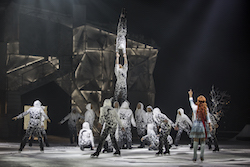
Cirque du Soleil’s ‘Crystal: A breakthrough ice experience’. Photo by Matt Beard, courtesy of Cirque du Soleil 2018.
Clearly, you’re versatile and multi-talented. That offers many opportunities for performers. Is that sometimes hard to balance? Do you sometimes feel a pull between different kinds of training, opportunities, where you spend your time and energy?
“It can be hard to find balance, especially when you are trying to achieve different goals. I found myself taking a step back to focus on different things and to plan my week accordingly based on what I needed to accomplish. I do a ballet class by myself three times a week, and I always start my day with a walk or a run (and an espresso!). This helps me maintain a balance.
Since adding skating, dancing, and now acrobatics (in training), it has become even more important to organize and prioritize my schedule – nothing is worse than trying to do everything at once. With time and experience, I can admit that I have found a balance and a way to do things that corresponds to what my body, mind, and soul requires.
I do sometimes feel pulled between different kinds of opportunities and training. Doing artistic and rhythmic gymnastics on top of skating required my body to adapt to different skills, and to develop to different groups of muscles. Participating in dance classes is probably the only thing that stabilized my body between the two sports. This also helped in finding a balance.
Finally, I started practicing meditation a few years ago, and that has helped with balance. I am trying not to throw myself into everything all at once and grasp at every training opportunity. If I want to do something or try a new skill, I will do it in my own time when my body and mind are ready.
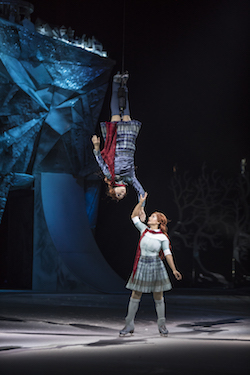
Cirque du Soleil’s ‘Crystal: A breakthrough ice experience’. Photo by Matt Beard, courtesy of Cirque du Soleil 2018.
As we get older, we’re presented with many choices and paths, and it’s important to know that you can do anything you want with the right resources and frame of mind. I’ve had to learn how much energy I can spend on certain things through prioritization.”
How did you find that the academic dance world differs from the professional dance world? Did you feel prepared? What might have prepared you better?
“For me, the academic world of dance or figure skating was a lot more supportive than the competitive world. You can really feel the pressure in amateur competition and the animosity between athletes and coaches. The academic approach feels more like teamwork – collectively working toward a goal. Consistency and being surrounded by my family, coaches and friends is what helped me be prepared.”
What helps keep you going with your rigorous performing schedule – physically, energetically, emotionally?
“I always make sure to meditate in the morning, to keep my mind as clear as I can because there are many hectic and nerve-wracking moments on tour. It’s important to stay focused despite every situation that may occur in or out of my control, and meditation helps me that way. I make sure that I condition myself with cardio and specific muscle group training. This keeps me well-enough to maintain my stamina in the show. We do seven to eight shows a week, and the conditioning helps me stay ready to perform.
I also like to surround myself with people who give me good energy and to whom I can give good energy back. We are a family of 89 people on tour, and we all look out for each other no matter what. I am dedicated to my craft and care deeply for what I do, and I can say the same for every single person on tour. It helps to hang out with people outside of work and at work. Balance!
All in all, there is a need for a balance and understanding of oneself. Knowing how to stabilize everything is vital because it can be exhausting and tiring at times, but exceptionally rewarding. Sometimes, you have to push through injuries or stress, and my meditation and conditioning always helps.”
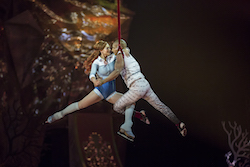
Nobahar Dadui (left) in Cirque du Soleil’s ‘Crystal: A breakthrough ice experience’. Photo by Matt Beard, courtesy of Cirque du Soleil 2018.
What do you hope to get out of the Cirque du Soleil experience, and what are you doing now to work toward achieving that?
“Making sure I offer the best performance possible every single day no matter how I feel is very important to me. Now that I am working for Cirque du Soleil, I train in different disciplines so that I can work on acrobatics, skating, dancing and acting. I am surrounded with people who have different backgrounds, and I can learn something new before or after the show to broaden my overall performance skills.”
Where to from here – what are your dream jobs, your larger-scale goals?
“I have been fortunate enough to accomplish many things in the last 20 years. Cirque du Soleil was one of my dreams, and I never thought it would happen, but skating made the dream a possibility! There is always a door ready to be opened, and I’m determined to be prepared to walk through that door and into the light of new opportunities. I have had this dream since I was little – to direct a film and be a part of a large-scale movie production. Walking the red carpet someday would be amazing!”
Cirque du Soleil’s Crystal: A breakthrough ice experience is now touring the U.S. For tickets and a list of cities, visit www.cirquedusoleil.com/crystal.
By Kathryn Boland of Dance Informa.


